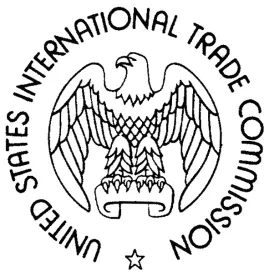Antidumping (AD) petitions were filed on April 19, 2017, on certain cold-drawn mechanical tubing of carbon and alloy steel from China, Germany, India, Italy, Korea and Switzerland, and countervailing duty (CVD) petitions were filed on the same merchandise from China and India.
The U.S. AD law imposes special tariffs to counteract imports that are sold in the United States at less than “normal value.” For AD duties to be imposed, the U.S. government must determine not only that dumping is occurring, but also that there is “material injury” (or threat thereof) by reason of the dumped imports. Importers are liable for any potential AD duties imposed. In addition, these investigations could impact purchasers by increasing prices and/or decreasing supply of cold-drawn mechanical tubing.
Scope:
The scope of this investigation covers cold-drawn mechanical tubing of carbon and alloy steel (“cold-drawn mechanical tubing”) of circular cross-section, in actual diameters less than 13 inches (less than 331 mm), and regardless of wall thickness, surface finish, end finish or industry specification. The subject cold-drawn mechanical tubing is a tubular product with a circular cross-sectional shape that has been cold-drawn or otherwise cold-finished after the initial tube formation in a manner that involves a change in the diameter or wall thickness of the tubing, or both. The subject cold-drawn mechanical tubing may be produced from either welded (e.g., electric resistance welded, continuous welded, etc.) or seamless (e.g., pierced, pilgered or extruded, etc.) carbon or alloy steel tubular products. It may also be heat treated after cold working (annealed, normalized, quenched and tempered, stress relieved or finish annealed). Typical cold-drawing methods for subject merchandise include, but are not limited to, drawing over mandrel, rod drawing, and sink drawing.
Subject cold-drawn mechanical tubing is typically certified to meet industry specifications for cold-drawn tubing including but not limited to:
-
American Society for Testing and Materials (ASTM) or American Society of Mechanical Engineers (ASME) specifications ASTM A-512, ASTM A-513 Type 3 (ASME SA513 Type 3), ASTM A-513 Type 4 (ASME SA513 Type 4), ASTM A-513 Type 5 (ASME SA513 Type 5), ASTM A-513 Type 6 (ASME SA513 Type 6), ASTM A-519 (cold finished);
-
SAE International (Society of Automotive Engineers) specifications SAE J524, SAE J525, SAE J2833, SAE J2614, SAE J2467, SAE J2435, SAE J2613;
-
Aerospace Material Specification (AMS) AMS T-6736 (AMS 6736), AMS 6371, AMS 5050, AMS 5075, AMS 5062, AMS 6360, AMS 6361, AMS 6362, AMS 6371 (sic), AMS 6372, AMS 6374, AMS 6381, AMS 6415;
-
United States Military Standards (MIL) MIL -T-5066 and MIL-T-6736;
-
foreign standards equivalent to one of the previously listed ASTM, ASME, SAE, AMS or MIL specifications including but not limited to:
(a) German Institute for Standardization (DIN) specifications DIN 2391-2, DIN 2393-2, DIN 2394-2;
(b) European Standards (EN) EN 10305-1, EN 10305-2, EN 10305-4, EN 10305-6 and European national variations on those standards (e.g., British Standard (BS EN), Irish Standard (IS EN) and German Standard (DIN EN) variations, etc.);
(c) Japanese Industrial Standard (JIS) JIS G 3441 and JIS G 3445; and -
proprietary standards that are based on one of the above-listed standards.
The subject cold-drawn mechanical tubing may also be dual or multiple certified to more than one standard.
Steel products included in the scope of this investigation are products in which: (1) iron predominates, by weight, over each of the other contained elements; and (2) the carbon content is 2 percent or less by weight.
For purposes of this scope, the place of cold-drawing determines the country of origin of the subject merchandise. Subject merchandise that is subject to minor working in a third country that occurs after drawing in one of the subject countries including, but not limited to, heat treatment, cutting to length, straightening, nondestruction testing, deburring or chamfering, remains within the scope of the investigation.
All products that meet the written physical description are within the scope of this investigation unless specifically excluded or covered by the scope of an existing order. Merchandise that meets the physical description of cold-drawn mechanical tubing above is within the scope of the investigation even if it is also dual or multiple certified to an otherwise excluded specification listed below. The following products are outside of, and/or specifically excluded from, the scope of this investigation:
-
cold-drawn stainless steel tubing, containing 10.5 percent or more of chromium by weight and not more than 1.2 percent of carbon by weight;
-
products certified to one or more of the ASTM, ASME or American Petroleum Institute (API) specifications listed below:
-
ASTM A-53;
-
ASTM A-106;
-
ASTM A-179 (ASME SA 179);
-
ASTM A-192 (ASME SA 179);
-
ASTM A-209 (ASME SA 209);
-
ASTM A-210 (ASME SA 210);
-
ASTM A-213 (ASME SA 213);
-
ASTM A-334 (ASME SA 334);
-
ASTM A-423 (ASME SA 423);
-
ASTM A-498;
-
ASTM A-496 (ASME SA 496);
-
ASTM A-199;
-
ASTM A-500;
-
ASTM A-556;
-
ASTM A-565;
-
API5L; and
-
API5CT
Except that any cold-drawn tubing product certified to one of the above excluded specifications will not be excluded from the scope if it is also dual- or multiple-certified to any other specification that otherwise would fall within the scope of this investigation.
The products subject to the investigation are currently classified in the Harmonized Tariff Schedule of the United States (HTSUS) under item numbers: 7304.31.3000, 7304.31.6050, 7304.51.1000, 7304.51.5005, 7304.51.5060, 7306.30.5015, 7306.30.5020, 7306.50.5030. The HTSUS subheadings above are provided for convenience and customs purposes only. The written description of the scope of the investigation is dispositive.
Alleged Dumping Margins:
Petitioners allege the following dumping margins:
-
China – Up to 188.88%
-
Germany – Up to 148.32%
-
India – 25.48%
-
Italy – Up to 69.13%
-
Korea – Up to 48.71%
-
Switzerland – Up to 115.21%
Estimated Schedule of Investigations:
-
April 18, 2017 – Petition is filed
-
May 9, 2017 – DOC initiates AD investigation
-
May 10, 2017 – ITC staff conference (estimated)
-
June 5, 2017 – Deadline for ITC preliminary injury determination
-
July 13, 2017 – Deadline for DOC preliminary CVD determinations, if deadlines are not postponed
-
September 18, 2017 – Deadline for DOC preliminary CVD determinations, if deadlines are fully postponed
-
September 26, 2017 – Deadline for DOC preliminary AD determinations, if deadlines are not postponed
-
November 15, 2017 – Deadline for DOC preliminary AD determinations, if deadlines are fully postponed
-
March 30, 2018 – Deadline for DOC final AD/CVD determinations, if both preliminary and final AD determinations are fully postponed and the CVD deadline is aligned with the AD investigation
-
May 14, 2018 – Deadline for ITC final injury determination, assuming fully postponed DOC deadlines





 />i
/>i

